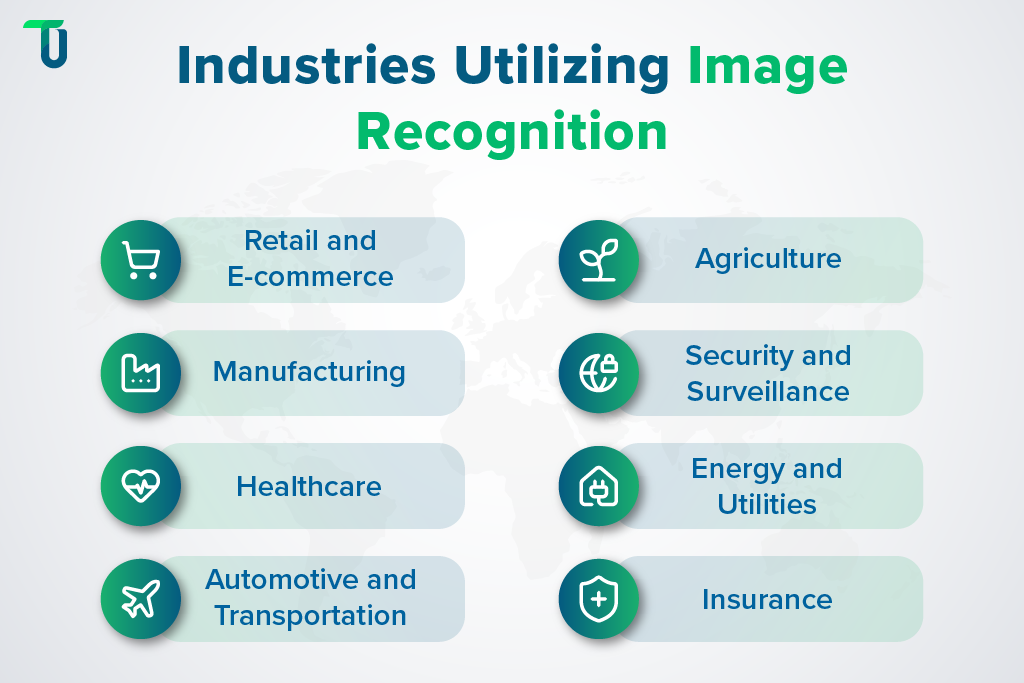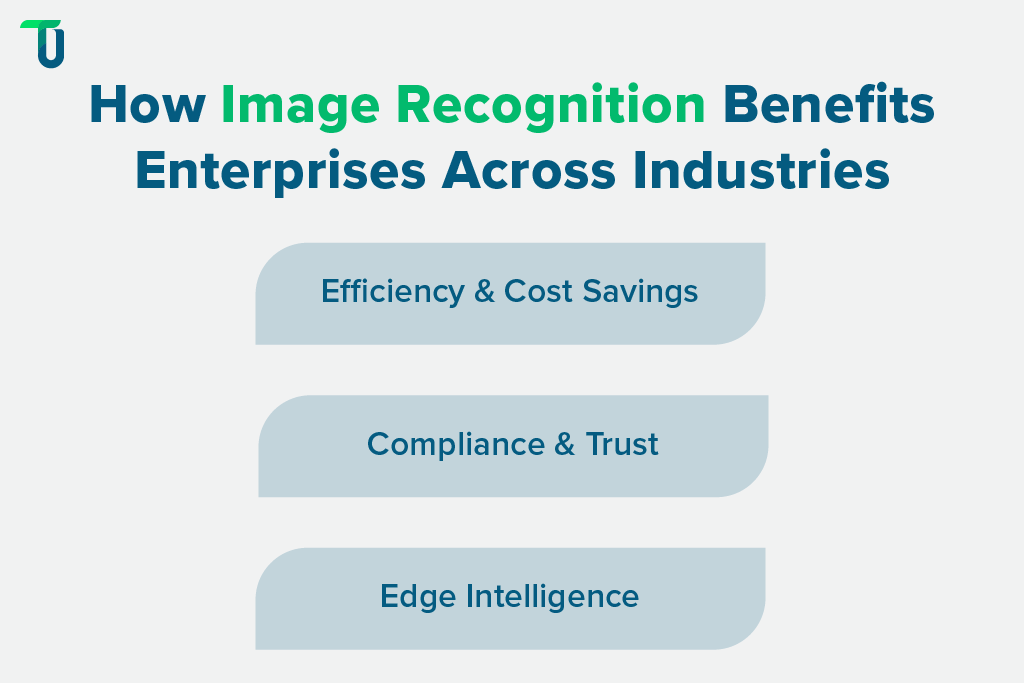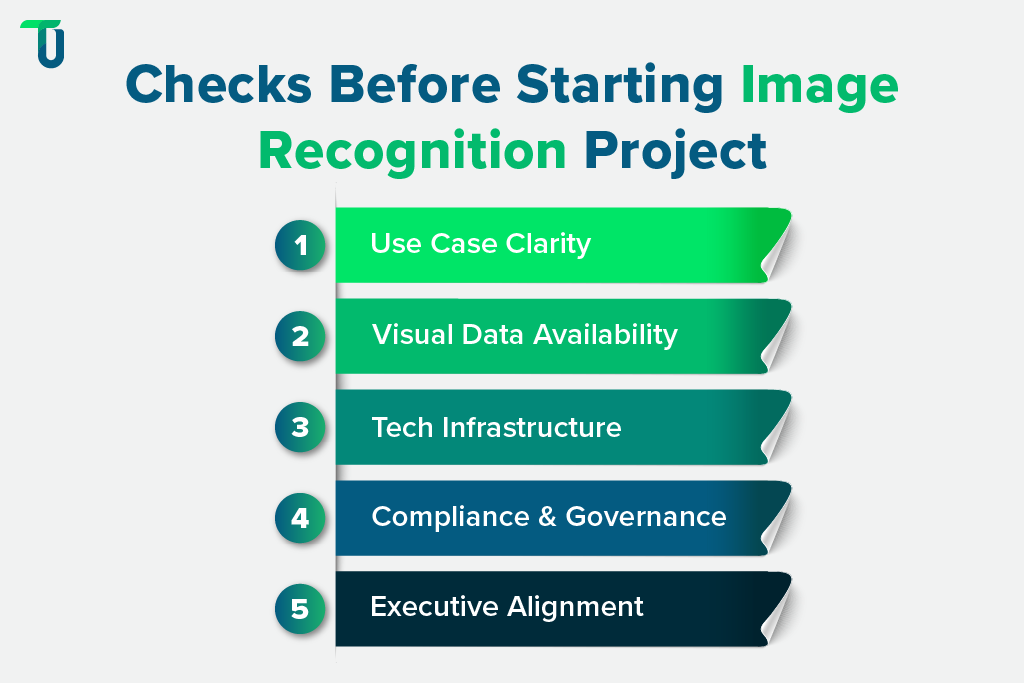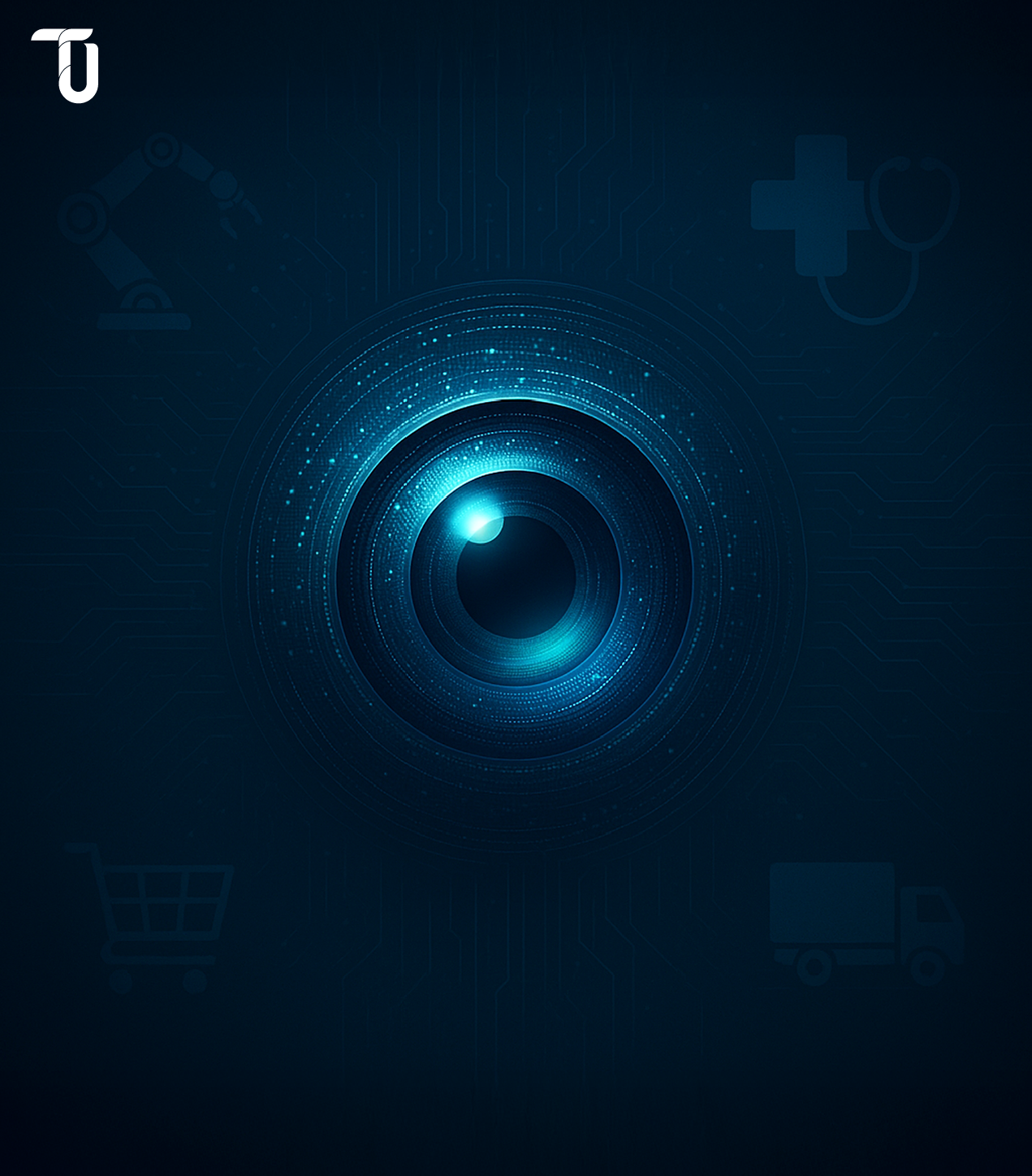Industry Spotlight: Where Image Recognition Drives the Most Value
Across industries, one pattern is clear: businesses that adopt image recognition software early, coupled with robust infrastructure and change management, are pulling ahead on speed, precision, and bottom-line performance. From shop floors to crop fields, here’s where AI-powered image segmentation is unlocking measurable value.

A. Retail & E-commerce
Shelf Monitoring and Planogram Compliance
Forget manual audits. With image recognition software, retailers can scan aisles, verify planogram adherence, and restock shelves with precision. Image segmentation tools make it easy to isolate and analyze product placement, ensuring compliance.
Visual Search and Customer Experience Enhancement
Shoppers today expect search results that match what they see. Image recognition enables visual search features that connect user-uploaded images to the right SKUs. Behind the scenes, image segmentation powers object identification and category mapping.
Theft and Loss Prevention
Computer vision detects suspicious behavior patterns, such as concealment or repeated movements near high-risk products. Combined with image segmentation, these systems can flag anomalies frame by frame. This gives security teams real-time alerts and helps reduce shrinkage.
B. Manufacturing
Quality Control and Defect Detection
High-volume production leaves little tolerance for errors, as even small errors have a big impact. With image segmentation tools, manufacturers can spot defects like scratches, dents, or missing parts before the product leaves the line. This helps reduce waste, rework, and customer complaints.
Safety Monitoring and Compliance
From PPE detection to machinery zone compliance, image recognition software helps enforce safety protocols across facilities. Real-time alerts can prevent violations before they become incidents.
Workflow Automation Using Visual Cues
AI models can be trained to recognize visual signals such as flashing lights, barcode patterns, and conveyor states. These triggers can initiate actions autonomously, allowing production workflows to self-correct and scale with minimal manual intervention.
Case Study Highlight: Gen AI‑Powered Automated Quality Control
At TenUp Software Services, we developed a Gen AI‑driven image recognition software solution using image segmentation tools to automate end‑to‑end quality inspection. The result?
- Achieved QA coverage across all product images.
- Significantly reduced inspection time and human error.
- Delivered scalable visual analysis.
This real-world delivery underscores how pixel‑level segmentation and AI accuracy translate into stronger brand reputation, faster feedback loops, and measurable ROI.
C. Healthcare
Medical Imaging and Diagnostic Assistance
Radiology is undergoing a silent revolution. With image segmentation, AI can highlight anomalies in X-rays, MRIs, and CT scans, supporting faster and in some cases, more accurate diagnoses when used alongside clinical expertise.
Patient Monitoring and Workflow Triage
In ICUs and ERs, image recognition software can monitor patient posture, movement, and facial expressions to detect distress, falls, or complications. These insights help clinicians prioritize cases without waiting for manual input.
Equipment and Asset Tracking
Hospitals lose time and money searching for devices. Vision-based tracking systems, powered by image segmentation tools, allow teams to locate assets instantly based on shape, color, or location context.
D. Automotive and Transportation
Driver Monitoring and ADAS (Advanced Driver Assistance Systems)
By segmenting the driver’s face and eye regions, AI systems detect drowsiness, distraction, or fatigue in real time. This enhances both safety and regulatory compliance, and in autonomous systems, AI-powered image recognition plays a critical role in enabling smarter, safer vehicles.
License Plate and Traffic Recognition
Modern tolling and parking systems rely on image recognition software to read plates, recognize vehicle types, and enforce policies automatically. Image segmentation increases accuracy even under poor lighting or weather conditions.
Predictive Maintenance Using Visual Inputs
Drones or mounted cameras scan fleets for physical wear such as tire damage or body corrosion. Visual cues segmented and analyzed over time help predict failures before they happen.
E. Agriculture
Crop Health Monitoring via Drones
Drones equipped with image segmentation tools for businesses fly over fields and classify plant health by analyzing color, shape, and texture. Farmers can receive a real-time crop health map without stepping into the field.
Pest and Disease Detection
Leaf discoloration, holes, or fungal patterns are early indicators. Segmentation algorithms spot these signs to help reduce chemical use and maximize yield. For a deeper look into how AI object detection specifically helps in pest control, see our blog on Vision-Led Farming: AI Object Detection for Pest Control.
Yield Forecasting with Satellite Imagery
Satellite images combined with image recognition software can estimate crop yield by analyzing plant density and canopy health across hectares. This is essential for supply chain planning and insurance models.
F. Security and Surveillance
Facial Recognition and Intrusion Detection
Modern surveillance is no longer passive. With image segmentation, AI can identify individuals, recognize faces, and detect boundary breaches in near real-time with a defined level of accuracy, subject to environmental and legal factors.
Crowd Analytics and Behavior Prediction
Stadiums, airports, and public spaces use image recognition software to detect crowd density, movement direction, and abnormal behavior. Segmentation helps classify actions frame by frame for better event control.
Real-Time Threat Assessment
From identifying weapons to spotting unattended bags, segmentation and recognition models assess threat levels and notify responders within seconds. This makes situational awareness both scalable and fast.
G. Energy & Utilities
Pipeline Monitoring and Leak Detection
Oil and gas operators can’t afford delays when it comes to leak identification. Image recognition software, combined with drone and satellite imagery, enables real-time monitoring of pipeline infrastructure across remote terrains. With image segmentation tools, anomalies like cracks, corrosion, or vegetation encroachment are detected—often before they escalate into failures.
Grid Inspection and Equipment Surveillance
Aging grids demand consistent visual inspection. Using AI, utility companies now automate the scanning of power lines, towers, and substations. Image segmentation isolates components like insulators or connectors, flagging signs of wear or overheating. The result? Fewer outages, optimized maintenance schedules, and improved grid reliability.
H. Insurance
Claims Automation and Damage Assessment
Why wait days for manual inspection? With image recognition software, insurers can process car accident photos, property damage, or medical imagery. Image segmentation tools accurately classify damage types such as scratches, dents, or water seepage. The AI system can also be trained to assign claim values based on severity and historical data.
Fraud Detection and Policy Compliance
By analyzing submitted visuals against policy coverage parameters, AI can flag inconsistencies or manipulated media. Segmentation enhances detection precision and helps ensure fraudulent claims are caught early without delaying legitimate ones.
Turn Images Into Intelligence
Deploy AI-powered image recognition that scales with speed, accuracy, and impact. Unlock operational efficiency and measurable ROI across industries.
The ROI of Image Recognition for Enterprises
Image recognition is no longer a futuristic capability—it has demonstrated measurable value in multiple industries.
Enterprises implementing custom image recognition software and image segmentation tools correctly are realizing tangible business benefits. From reducing costs to enhancing accuracy and ensuring regulatory compliance, the returns are measurable across functions.

Cost Reduction, Speed Gains, and Scalable Accuracy
- Reduced labor costs through automated visual inspections
- Accelerated decision-making with real-time processing
- Improved accuracy that minimizes rework, returns, and operational errors
In high-volume environments such as manufacturing, image segmentation enables real-time identification of defects. What previously required hours of manual inspection can now be completed in minutes, reducing operational costs while maintaining product quality. This results in leaner workflows, faster production cycles, and measurable cost savings.
Compliance, Traceability, and Brand Trust
Enterprises operating in highly regulated industries face growing scrutiny. Image recognition technologies can support compliance enforcement at the source.
- Visual compliance monitoring can ensure safety standards, such as PPE usage or SOP adherence, are met in real time
- Traceability can be enhanced with image data recorded and categorized at every operational checkpoint
- Brand credibility can be strengthened through consistent quality and transparency
By leveraging image segmentation tools for businesses, organizations can monitor, audit, and report with confidence, reducing risk and reinforcing brand reputation.
Data-Driven Decision Making at the Edge
Edge computing, when paired with image recognition, allows enterprises to process and act on data closer to the source.
Rather than relying solely on cloud infrastructure, image segmentation tools can be deployed on edge devices, enabling immediate insight generation.
Use cases include:
- Identifying crop health anomalies via drone imagery in the field
- Detecting equipment wear in real time during industrial operations
- Flagging safety violations on-site without connectivity delays
This capability allows for faster interventions, improved uptime, and greater responsiveness across business units.
Key Challenges and How Enterprises Are Solving Them
Deploying image recognition software at scale is a strategic advantage, but it comes with a set of real-world complexities. From data privacy concerns to maintaining performance across environments, enterprises face several challenges in operationalizing image intelligence. The good news is that each of these obstacles has a clear, proven solution.
1. Data Privacy and Ethical Use
As enterprises collect and process large volumes of visual data, often involving people, sensitive environments, or proprietary assets, data privacy and ethical governance become critical priorities.
- Regulatory frameworks such as GDPR and HIPAA require strict control over how visual data is stored, processed, and shared.
- Facial recognition and surveillance use cases also raise concerns around bias, consent, and responsible deployment.
How enterprises are solving this
Leading organizations are incorporating privacy-by-design principles into their AI workflows. This includes using anonymization techniques, deploying image segmentation tools to mask sensitive elements at the point of capture, and implementing well-defined data governance protocols.
2. Training AI on Industry-Specific Visual Data
Generic AI models often underperform in complex enterprise environments. Whether it involves classifying medical scans, inspecting industrial pipelines, or evaluating property damage, models need to be trained on visual data that reflects specific industry conditions and use cases.
How enterprises are solving this:
Companies are curating domain-specific datasets, working with expert human annotators, and applying image segmentation tools for pixel-accurate labeling, driving faster tuning cycles and higher operational accuracy.
Case in point:
TenUp Software Services trained custom AI workflows on a set of 37 image criteria covering all dealer listings, processing two million images per month. This bespoke training enabled comprehensive image quality analysis across diverse compositions with consistent accuracy, a level of precision and scalability that generic models cannot match.
3. Model Drift, Performance, and Scalability
AI models can degrade in performance over time due to shifting environments, new data patterns, or inconsistencies in inputs. A model that performs well during a pilot may struggle when rolled out across multiple locations or systems.
- Changes in lighting, camera angles, or background conditions can impact detection accuracy.
- Static training datasets may not reflect evolving operational realities.
How enterprises are solving this:
To address these issues, organizations are adopting continuous monitoring and retraining strategies supported by an AI workflow orchestration platform that automates feedback loops, annotation, model comparison, and deployment at scale. These include
- Implementing human-in-the-loop review processes.
- Using infrastructure that supports model updates.
- Selecting image recognition software with adaptive learning capabilities.
Scalability is achieved through modular AI pipelines that integrate easily with cloud or edge platforms. This allows consistent performance across different teams, regions, or use cases.
4. Infrastructure Readiness
Enterprises often underestimate the computing and storage requirements needed to run AI-powered image recognition at scale.
- High-resolution visual data demands significant GPU and storage capacity. Choosing the right Enterprise image recognition software ensures smoother integration with existing systems and helps avoid early architectural challenges.
- Integrating AI into existing enterprise systems can create architectural challenges if not managed early.
How enterprises are solving this:
Many are adopting cloud-native, edge-compatible architectures to enable faster deployment and lower infrastructure costs. Pre-built image segmentation tools and APIs also accelerate time to value by reducing development overhead.
How to Assess Readiness and Start Small
Not every enterprise is ready to dive straight into large-scale AI image recognition. But those that start small, with a focused use case, clean datasets, and the right partner, often scale more successfully and with less friction.
Image Recognition Readiness Checklist for CTOs
Before investing in pilots or platforms, assess these five areas to avoid budget overruns and deployment delays:

1. Use Case Clarity
Is your problem statement specific, measurable, and aligned to a business outcome like quality inspection, claims validation, or anomaly detection?
Do you have access to relevant historic visual data for model training?
2. Visual Data Availability
Are your image datasets labeled, organized, and permissioned?
Can you enhance them using synthetic generation or a dedicated image segmentation tool?
3. Tech Infrastructure
Are your systems cloud-ready or able to support edge deployments?
Can your current stack support high-throughput image recognition software?
4. Compliance and Governance
Do you have policies in place to ensure data privacy, auditability, and responsible AI usage?
Are you compliant with GDPR, HIPAA, or other sector-specific regulations?
5. Executive Alignment
Are business, IT, and operations teams aligned on goals, timelines, and performance metrics?
TenUp Software Services helps CTOs assess enterprise readiness using a tailored checklist to identify the lowest-friction entry point for image recognition adoption, without disrupting ongoing operations.
POC vs Full-Scale Deployment: What to Consider
Starting with a proof of concept helps reduce investment risk, provided it’s designed with future scalability in mind.
POC Advantages
- Fast stakeholder validation
- Lower upfront costs
- Effective for testing model accuracy and business impact
Common Pitfalls
- No clear roadmap for scaling post-pilot
- Misaligned success metrics
- Incomplete datasets that miss real-world complexity
Pro Tip: Design your POC to mirror production-level conditions, using diverse image sets and near real-time testing where possible.
Build vs Partner: What Makes Sense for Your Business?
Choosing between building in-house and partnering depends on your timeline, technical depth, and industry needs.
Building internally offers control but requires significant time, budget, and AI expertise. For many enterprises, this can delay results and stretch resources thin.
Partnering with a specialized company like TenUp Software Services gives you access to ready AI engineering talent, experience in building computer vision solutions for enterprises, and full-cycle support from PoC to production. We’ve delivered result-oriented image recognition solutions, focusing on accuracy, scalability, and compliance.
If speed, risk reduction, and long-term value are priorities, co-building with a trusted partner may be the smarter path forward.
Pixels to Performance: Why Now Is the Time to Act
Image recognition is no longer a future bet. It is increasingly becoming a present-day driver of efficiency, compliance, and performance across industries.
The real advantage comes when strategy is matched by strong execution.
At TenUp Software Services, we help enterprises bridge the gap between vision and value. Our expertise spans computer vision models, custom image segmentation, edge deployment, and visual data automation. Whether you're looking to enhance quality checks, streamline insurance claims, or automate pipeline inspections, our AI services are built to solve real business problems.
Ready to move from pilots to performance?
Let’s build it together.
Bring Your Vision AI Solution from POC to Production
Your next advantage starts with a frame. We help you capture it, process it, and act on it, in real time. Explore our Services.
Frequently asked questions
How accurate is AI image recognition compared to human inspection?
AI image recognition delivers 95–99% accuracy, surpassing humans in speed, consistency, and microscopic defect detection. Unlike people, AI doesn’t fatigue and can analyze thousands of images per minute. However, human inspectors remain vital for complex edge cases, judgment, and validating AI findings—making a combined approach most effective. AI accuracy in the real world also varies with use case, data quality, and context.
What is the difference between image classification, detection, and segmentation?
Image classification labels an entire image (“this is a cat”). Object detection finds and localizes multiple items with bounding boxes (“two cats here”). Image segmentation goes pixel by pixel, outlining exact shapes (“this region is the cat’s tail”). Businesses use segmentation for precision-critical tasks like quality control or medical imaging.
What infrastructure components are needed for scalable image recognition deployment?
Scalable image recognition needs GPU/TPU compute for high-speed training and inference, fast storage for massive visual data, and APIs for enterprise integration. A hybrid model, cloud for scalability and edge devices for low-latency processing, delivers secure, cost-efficient, real-time performance at a global scale.
When is it better to build in-house versus partner with a Vision AI provider?
Build in-house if you have skilled AI talent, data, and long-term resources. Most enterprises gain faster ROI by partnering with a Vision AI provider, accelerating deployment, reducing risk, and leveraging proven expertise for scalable, production-ready solutions.
What is enterprise image recognition and why should my business care?
Enterprise image recognition applies AI to analyze photos and videos at scale, transforming visuals into actionable insights. Beyond detection, it improves compliance, speeds inspections, cuts costs, and unlocks new revenue, giving businesses measurable ROI and a competitive edge.
What’s the difference between image recognition and image segmentation for business use cases?
Image recognition classifies what’s in an image, while image segmentation maps each object’s exact boundaries. For business, recognition powers scalable automation like tagging or detection, while segmentation enables precision-critical tasks, such as defect detection, medical imaging, or crop analysis—where accuracy drives ROI.
Which industries benefit the most from AI image recognition right now?
AI image recognition delivers the biggest impact in healthcare (diagnostics, patient monitoring), retail & e-commerce (visual search, shelf tracking), manufacturing (defect detection, predictive maintenance), and security (facial recognition, threat detection). It’s also transforming transportation, agriculture, and insurance with automation, accuracy, and faster ROI.
Can image recognition work with the systems my company already has?
Yes. Modern image recognition integrates smoothly with ERP, CRM, legacy apps, and existing camera systems via APIs and cloud platforms. It plugs into workflows like QA dashboards, inventory tracking, or CRM insights, delivering value without replacing your current infrastructure.

